Last updated on May 27, 2022
As the capital city of Scotland, many people visit Edinburgh to tour through history and remarkable buildings, see a world-famous festival, and of course, get a first-hand look at Edinburgh Castle. Boasting an eclectic mix of cobblestone streets and cocktail clubs, historical buildings, and interesting Scots, Edinburgh is an ancient yet vibrant city. The facts about Edinburgh included in this post will astound you!
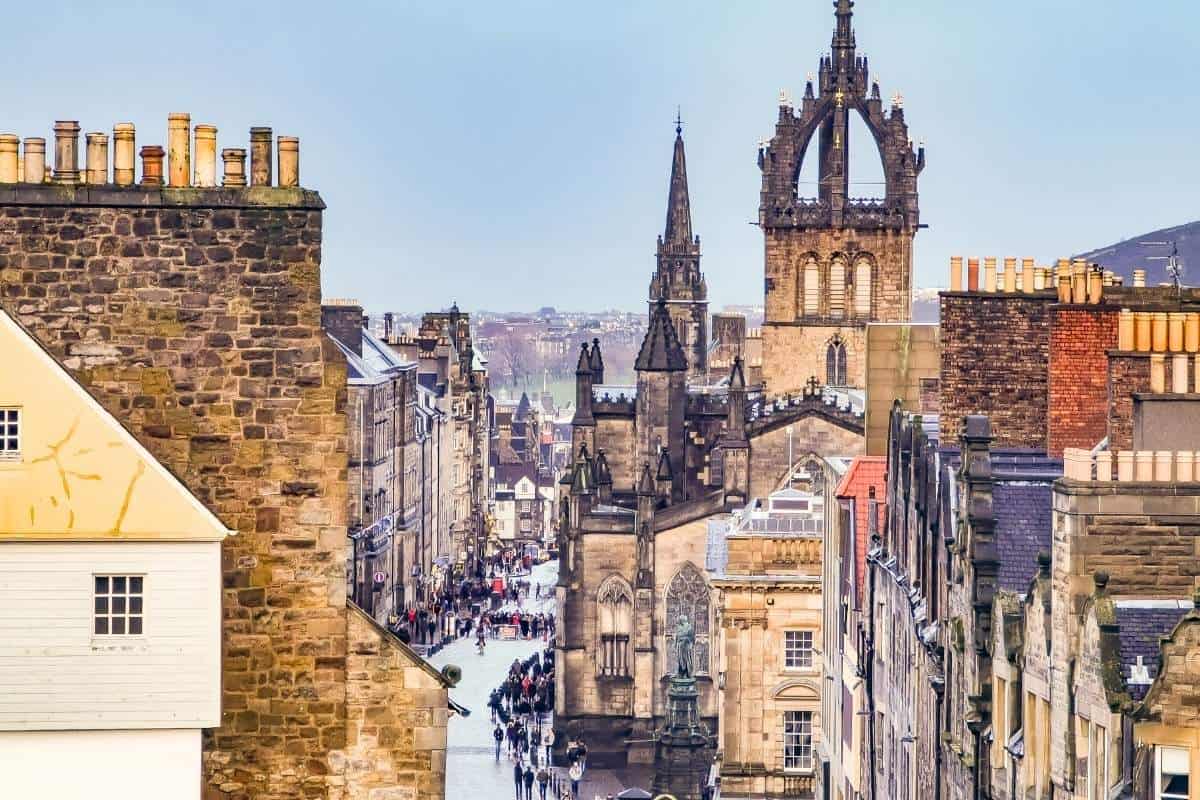
Scotland’s capital city is historic and happening but full of mystery with a deep, dark past. Poor hygiene, witch trials, wars, a castle built on an extinct volcano, an underground city, and more! It’s no wonder Edinburgh is one of the most haunted places in Europe.
Do you already consider yourself an Edinburgh-phile? Then go ahead and test your knowledge in our quiz about Edinburgh facts, or if you’re not quite ready for that, read on to learn facts about Edinburgh, Scotland.
Facts About Edinburgh
Geography
~ Edinburgh is located in Lothian, a region of the Scottish Lowlands, on the southern shore of the Firth of Forth (an estuary of several rivers including the River Forth).
~ Arguably one of the most interesting facts about Edinburgh is that it is comprised of an Old Town and New Town. Old Town is the ancient part of the city, dating back to Medieval times, and contrary to what the name suggests, New Town is actually 250 years old.
~ Edinburgh’s Old Town is based around the Royal Mile, which stretches one mile between Edinburgh Castle and the Palace of Holyroodhouse. The name – Royal Mile – comes from its tradition as being a processional route for kings and queens for the last 500 years.
~ Those charming little narrow streets running down off the Royal Mile (called ‘closes’) used to be some of the dirtiest streets in the city due to the people living above the street dumping out their chamber pots onto the ground below.
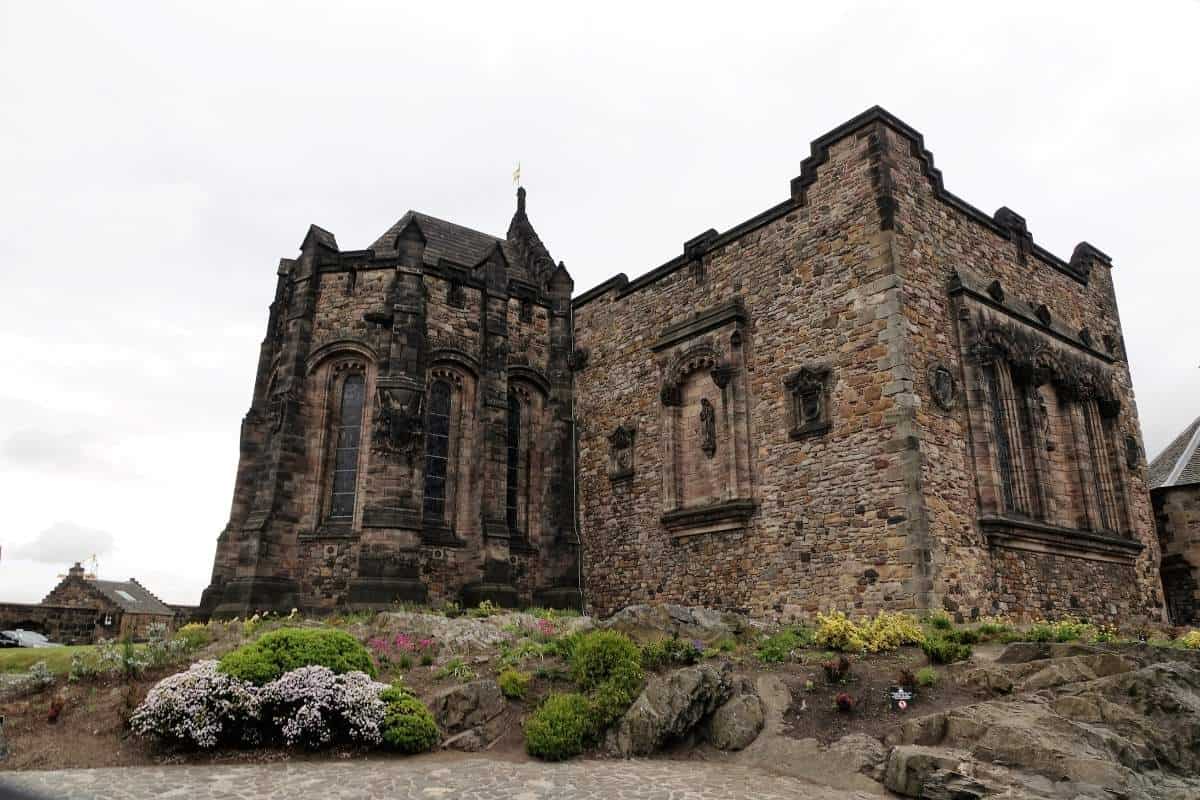
~ Now a beautiful and lush park, Princes Street Gardens used to be a marsh called Nor’ Loch that aided in the defensibility of the Northern boundary of Edinburgh. However, due to its downhill proximity from Old Town, Princes Street Gardens actually used to be where the drainage from the city’s chamber pots ended up.
~ The Royal Mile is not a true mile. It is actually one mile and 107 yards long.
~ Arthur’s Seat is an extinct volcano and the highest point in Edinburgh. Located in Holyrood Park, it is situated east of the city centre, about 1 mile to the east of Edinburgh Castle.
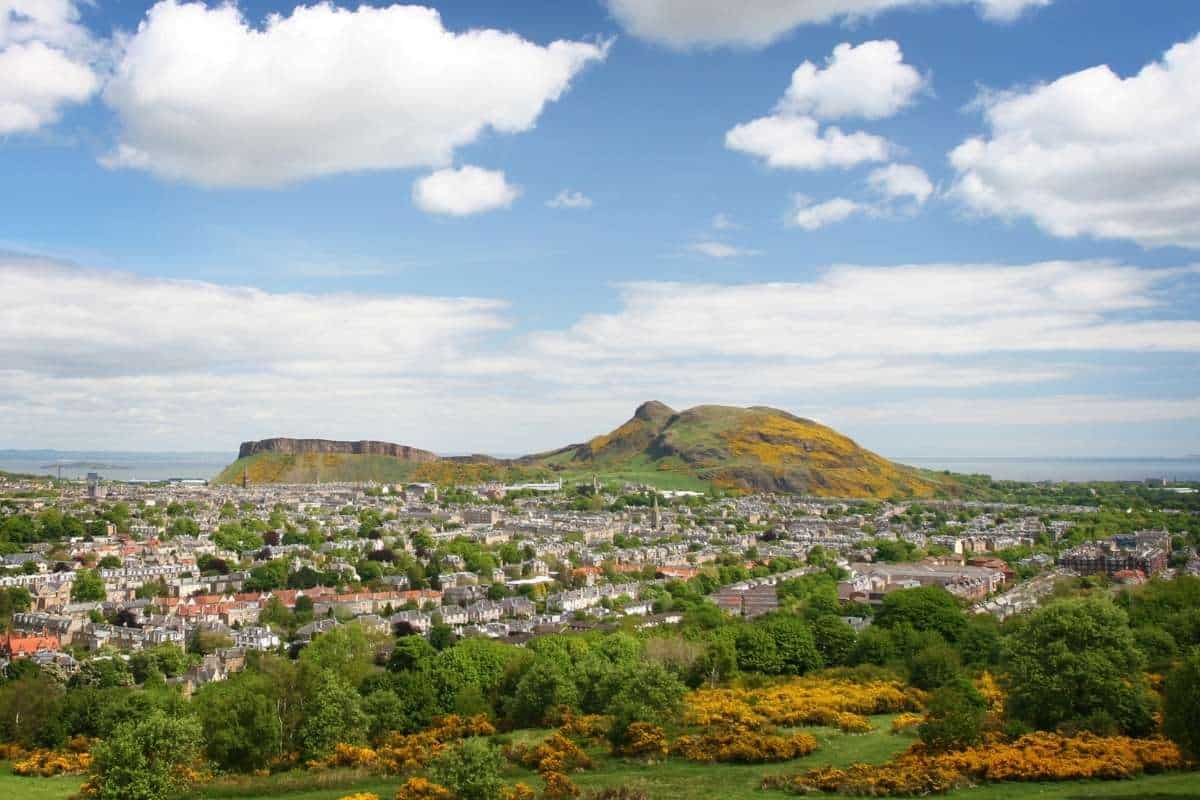
~ The lower end of the Royal Mile used to be so dangerous it was thought of as the World’s End.
~ Edinburgh Castle, also known as Castle Rock, sits atop an extinct volcano that last exploded nearly 340 million years ago.
~ Right in the middle of the bustling city life of Edinburgh is Holyrood Park, featuring Dunsapie Loch, St Margaret’s Loch, and Duddingston Loch.
People and Languages
~ The earliest known human habitation in the Edinburgh area was of a Mesolithic camp site dated to c. 8500 BC. Traces of later Bronze Age and Iron Age settlements have been found on Castle Rock and Arthur’s Seat.
~ Edinburgh is Scotland’s second-most populous city, behind Glasgow, and the seventh-most populous city in the United Kingdom.
~ A person from the city of Edinburgh, Scotland, is called an Edinburgher.

~ Dating back centuries, Gaelic is the founding language of Scotland that is thought to originate from Ireland. Although speakers of the language were persecuted over the centuries, Gaelic is still spoken today by around 60,000 Scots.
~ Alexander Graham Bell, the man who brought telephone technology to the world, was born in Edinburgh in 1847.
~ What do you say if someone asks if you want a Scottish kiss? Say NO! A Scottish kiss consists of a sharp, sudden headbutt to the nose, usually resulting in a broken nose.
History
~ St. Margaret’s Chapel, located inside Castle Rock is the oldest building in Scotland and dates back to the 12th century. Named after Queen Margaret, the partner of Malcolm III of Scotland, she died just three days after learning of King Malcolm’s death in battle.
~ Greyfriars Kirkyard is a large graveyard that surrounds the historic Greyfriars Kirk. Around the year 1477, Franciscan Friars built and established a Friary on the edge of Old Town overlooking the castle. They were called Greyfriars as they wore grey robes – hence where the Kirk and Graveyard get their names! Kirk is the old Scottish word for a church. It was established as a burial area during the reign of Mary Queen of Scots.
~ At over 400 years old and with over 100,000 people buried on the grounds, Greyfriars Kirkyard is known as the most haunted graveyard in the entire world.
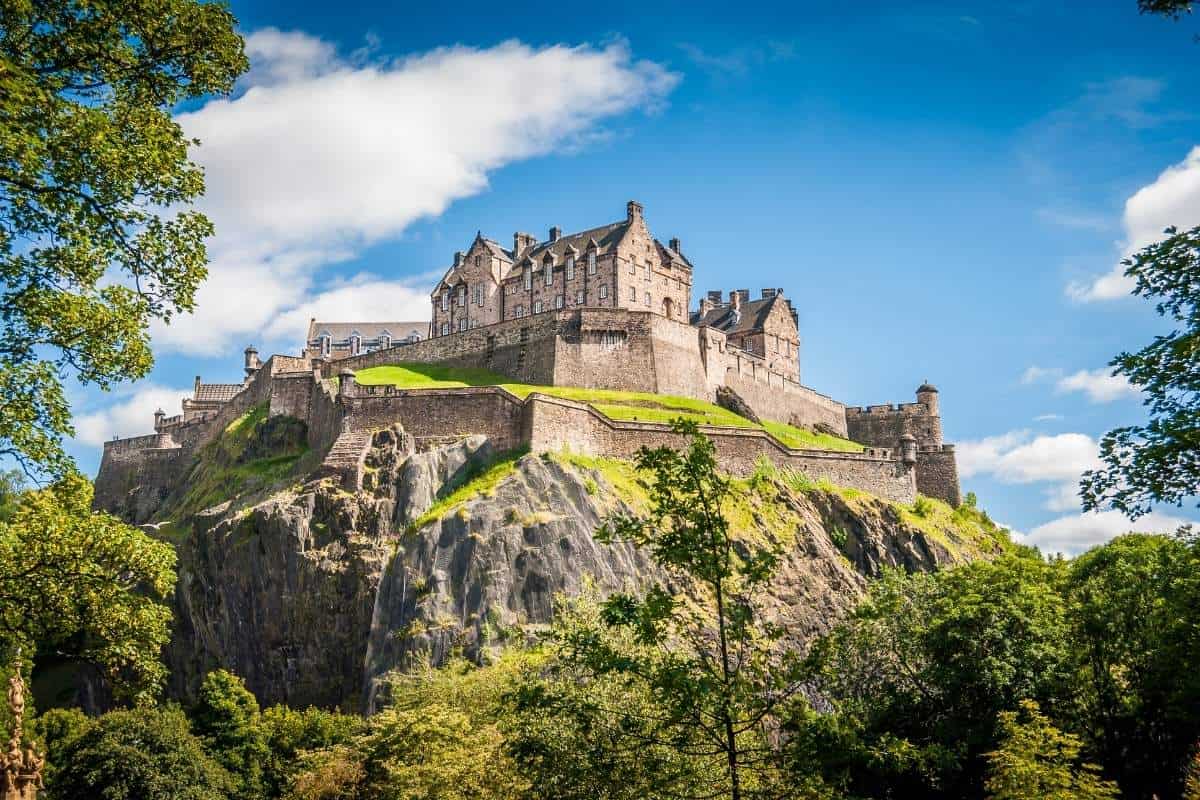
~ Although Edinburgh Castle has been besieged more than any other place in Britain, a Jacobite force failed to capture Edinburgh Castle during the Rising of 1715 thanks to poor planning. The ladder they brought to scale the ramparts turned out to be too short.
~ Edinburgh was not always the capital city! Up until 1437, Scone was the capital of Scotland.
~ Listed buildings are those with special architectural or historic interest designations. With it’s fantastical history, the city of Edinburgh contains an amazing 4,500 listed building designations!
~ Underneath Edinburgh is a system of underground tunnels and chambers that served as a shelter to the city’s poorest citizens, as well as thieves, criminals, and the unfortunate souls who became sick during the plague. Full of dark history, it is a super haunted part of the city that is appropriately named: Damnation Alley. With plenty of ghost sightings and hauntings, taking a tour of the underground is definitely not for the faint of heart.
Culture
~ The unicorn is Scotland’s national animal and was first used on the Scottish royal coat of arms by William I in the 12th century. This piece of culture remains in modern times and in Edinburgh, the capital of Scotland, you can find the mythical unicorn all over the city along the Edinburgh Unicorn Trail.
~ “You’ll have had your tea?” is a phrase that goes back to 18th century Edinburgh and remains a common Edinburgh greeting as a way to avoid putting on a kettle for company.
~ The Edinburgh Fringe Festival is the world’s largest arts festival! This popular arts festival was established in 1947 and takes place in Edinburgh every August.
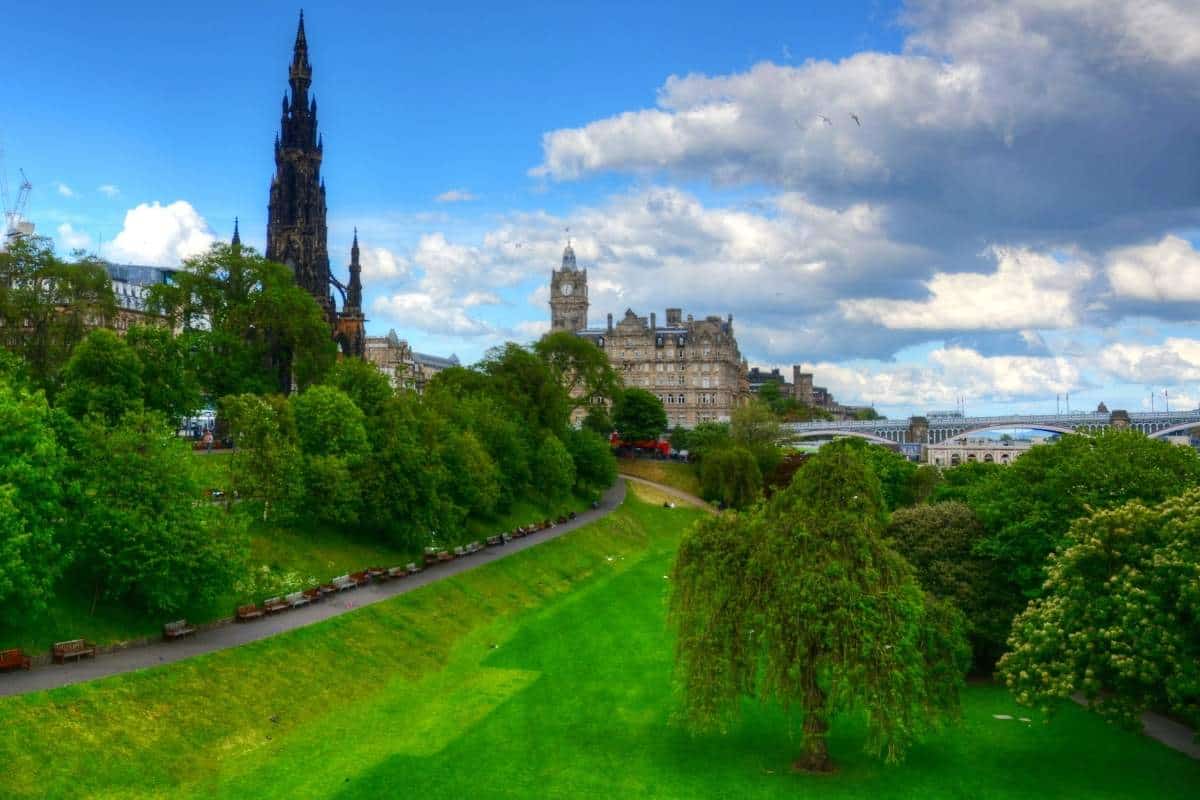
~ Not only is the Fringe Festival open to anyone who wants to perform, but the number of tickets sold for the Fringe Festival’s events is also exceeded only by the World Cup and the Olympics!
~ Edinburgh is visually the greenest city in the UK with 112 parks and more trees per head than any other city in the UK. New initiatives pushing for even more ways to offset their carbon footprint are continually being rolled out as they have their sights set on being seen as the greenest city in the world.
~ Located right in New Town, Edinburgh, Princes Street is shopping central for locals and visitors alike. The department store Jenners (affectionately known as ‘The Harrods of the North’) opened in 1838 and is the world’s oldest department store and the largest shop in Scotland.
~ Edinburgh was at the centre of the whiskey boom in the 19th century as the market and demand for the spirit grew. In fact, Edinburgh is the birthplace of one of the most recognizable scotch whiskeys in the world: Johnnie Walker. The distillery even now remains operating in the city.
Facts About Edinburgh: Just For Fun
~ Firefighters are Scottish in origin! Edinburgh is the birthplace of the very first organized municipal firefighting service. It was established in 1824 following the scare of the Great Fire of London.
~ The Scottish crown jewels were lost in Edinburgh Castle for years. Known as the Honours of Scotland, they were used in the coronation of Scottish monarchs before Scotland and England were united under one crown. After the Union of 1707, the Honours were locked in a chest and forgotten about for nearly a century.
~ Is Edinburgh the birthplace of the Harry Potter series? Many think so…but it actually isn’t! While J.K. Rowling used to frequent The Elephant House in Edinburgh (who claims to have been the inspiration), she actually wrote most of it in London. (For many, this is the most interesting of facts about Edinburgh!)
~ Edinburgh Castle was once home to an elephant after Highlanders returned to Edinburgh in 1838 after being posted in Sri Lanka. The elephant lived at the castle and became the head of the infantry marching band.
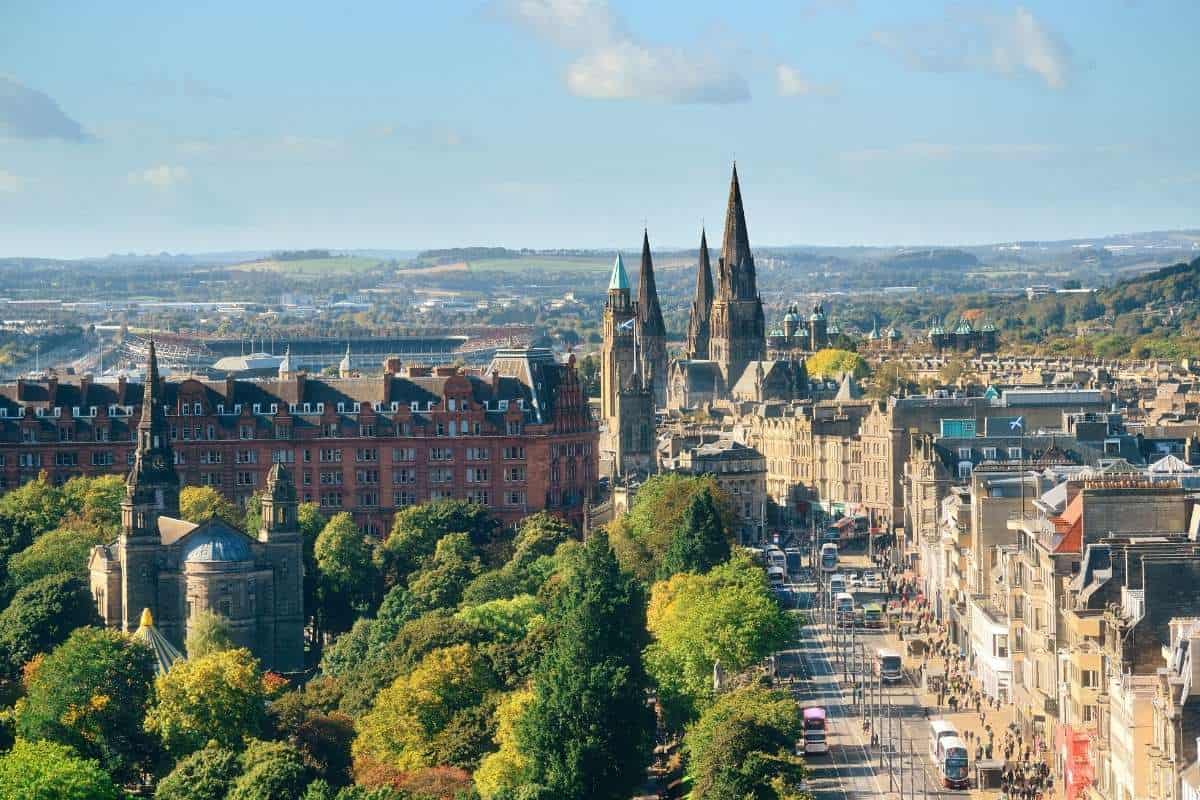
~ Greyfriars Bobby was a dog who became known in Edinburgh for spending 14 years guarding the grave of his owner until he died on 14 January 1872.
~ Harry Potter fans pilgrimage to Edinburgh for a variety of Potterhead sights but arguably the most morbid would be the supposed gravestone of Lord Voldemort (the arch-nemesis of Harry Potter); a headstone of a man whose name was ‘Thomas Riddle’ located in Greyfriars Kirkyard.
~ We’ll conclude with one of the ODDEST facts about Edinburgh, Scotland: The city is home to the world’s longest electric blanket (sitting underneath the Mound). The Mound is an artificial slope that was formed during excavation when New Town was being constructed. The hill was quite arduous so in 1959 an electric blanket was installed under the surface of the road on The Mound to heat it and keep it free from ice and snow. It is no longer operational but still makes a great fact to stump people with.
Now that you’ve read the whole post, go test your knowledge in our quiz about Edinburgh, Scotland!
[adinserter name=”Block 1″]





